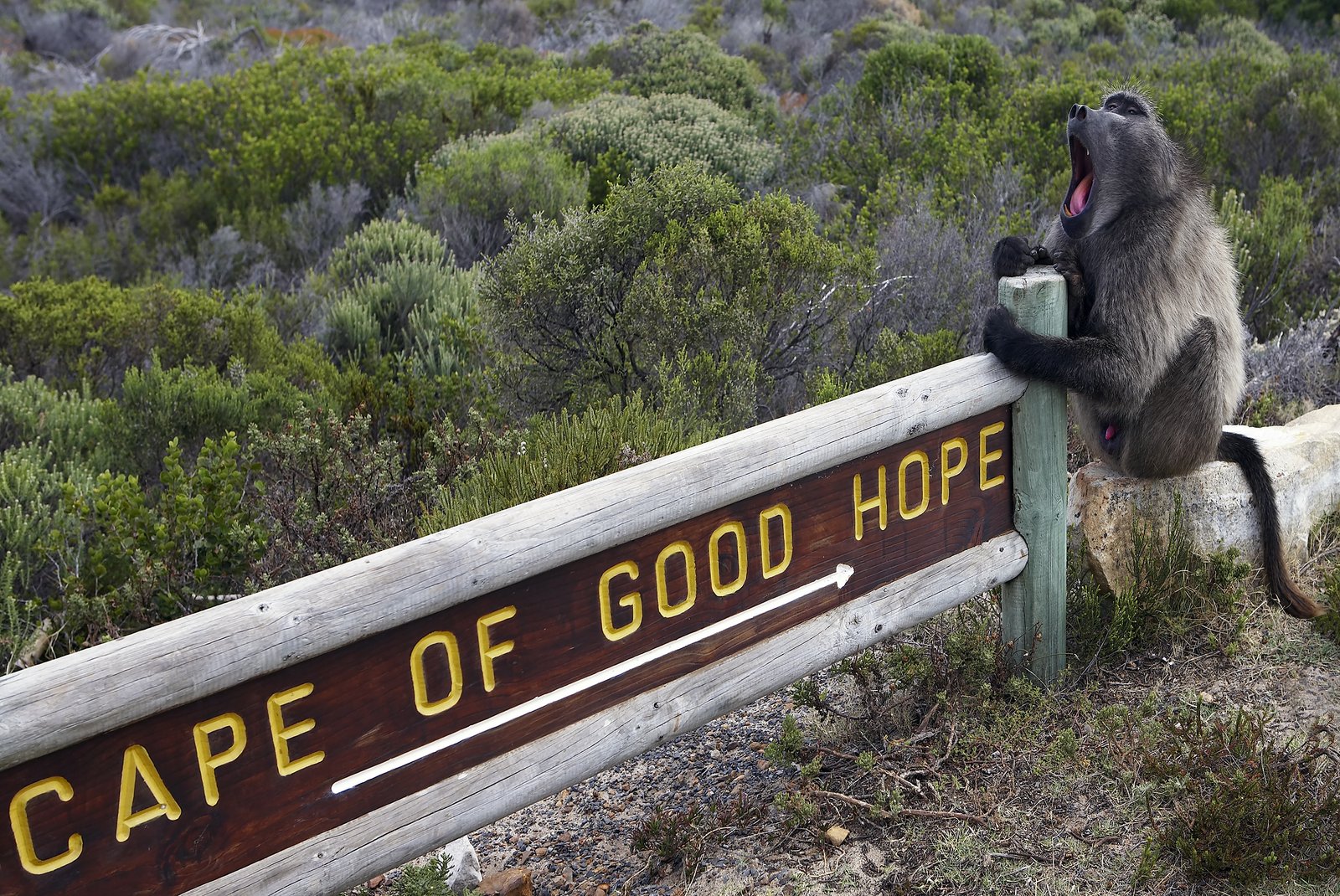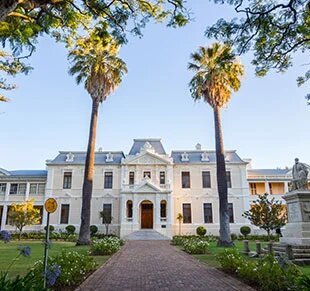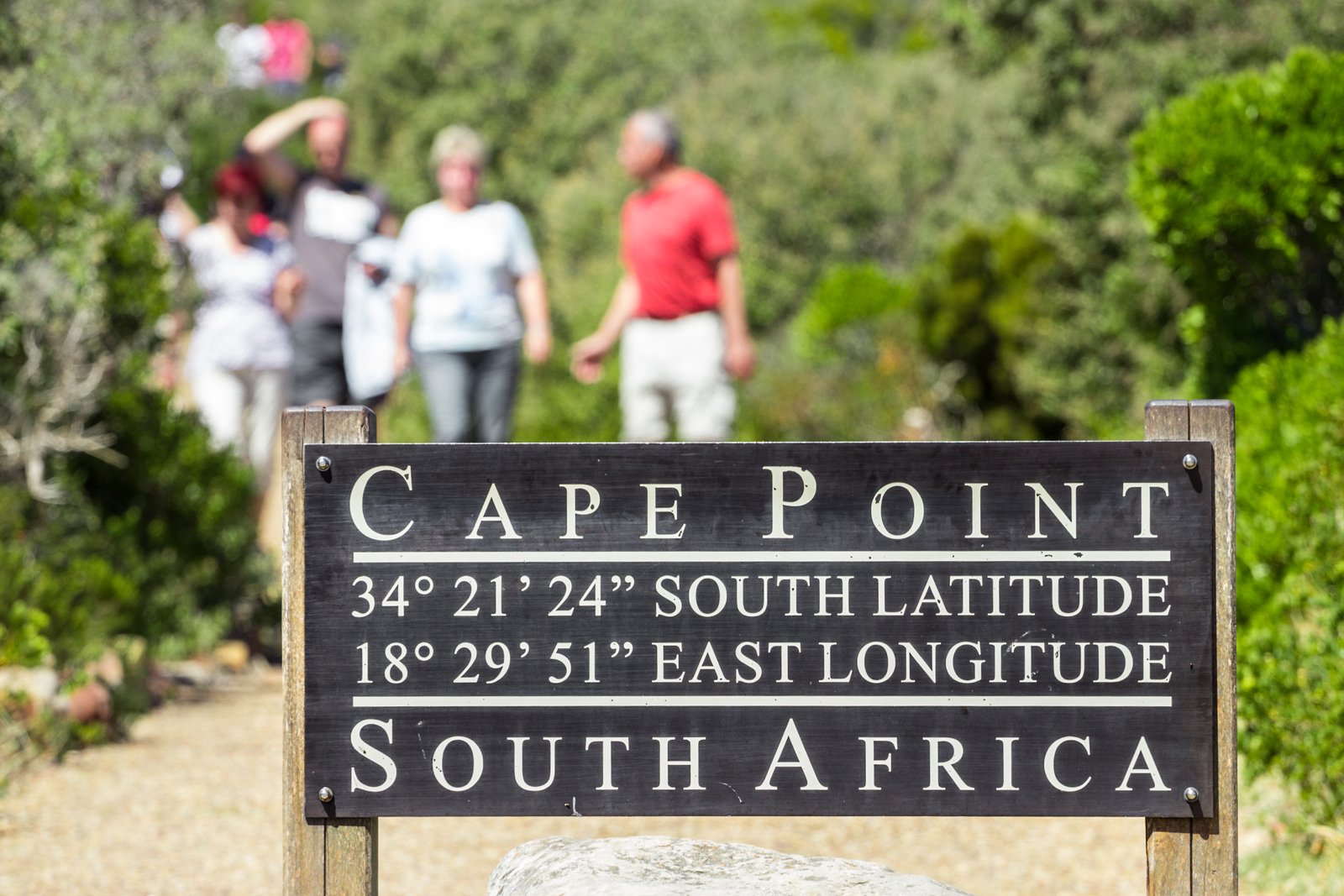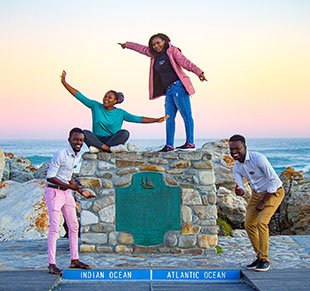Table Mountain
Table Mountain is a new addition to the 7 world wonders of nature and is a must visit when you are in
Cape town. A cable car with a rotating floor runs horizontally from the lower cable station to the upper
cable station where you will have vast areas to roam while enjoying the 360 degrees view of the entire
Cape town area. Table Mountain also harnesses her own unique and rare flora which is called Table
Mountain sandstone fynbos and is a part of the world’s richest floral kingdom. Your guide will escort you
on the circular Table Mountain trail pointing out and explaining all the important landmarks, fauna, and
flora to you
DISCLAIMER: The Table Mountain aerial cableway is open subject to conducive weather conditions. In
the event that the Cableway operations are suspended due to unfavourable weather, the tour will carry
on to the next item on the itinerary and you have a choice to either, keep the tickets for another day or
request a refund for the tickets.
Bo-kaap
Bo-kaap is a residential area found in the heart of the Cape town city centre, starting from Buitengracht
street and creeping up the Signal hill, Southwest of the city. Stone cobbled streets runs steeply towards
the mountains along rows of the famous colourful Cape Dutch style buildings while several mosques
dominates the skyline in a fashion never seen anywhere else in the country. The majority of the
residence here are direct descendants to the far easterners and Southwest Africans that were hurled
from their native lands to slave at the Cape. Their unique culture, cuisine and religion creates one of the
brightest elements to South Africa’s famous rainbow nation and a walk into one of the traditional shops
found here gives one a good introduction to the uniqueness of the Bo-kaap. Your guide will give you a
short walking tour covering important landmarks, i.e Bokaap Museum, The first Mosque and the Tana
Baru shrine.
Adderly Street
Adderly street has for many years, been and still is Cape town’s most decorated street. A stroll into
Adderly street will have one quickly noticing the amount of attention Adderly street has received more
than any other street in Cape town city. The dual carriage way slices through the city in a straight line
and with a series of large traffic circles at 100-meter intervals. Life size bronze sculptures of some of
Cape town’s most historic figures stands tall within these rounds abouts and half-way the street, a
fountain squirts into the air as the planted palm and fever trees dances to the tune of the Southeastern
winds of the cape. A canal also runs parallel to the street and the footpath in between the dual
carriageways. If stories are to be believed, this Is a street that a typical young man of the 18th century
would take his significant other on a date!
Your guide will stop on Adderley Street and unpack all the fascinating facts and stories about the everbeautiful Adderly street before proceeding to the Castle of good hope by car.
Church Square
From the castle of good hope, your tour will continue on foot across the grand parade and past the old
City Hall to church square where historical buildings such as the oldest church in the country, the Sir
Herbert Baker designed mutual heights of Australasia building, and the former Union chapel of London
surrounds the square. The life size bronze sculpture of Jan Hofmeyer also adds flair to the square as it
stands, sternly in middle of the square. Our Jan, as he is known among the Afrikaner culture, is revered
as one of the activists who lobbied for the formalization of the Afrikaans language in South Africa. Also
found at church square are 11 concrete blocks depicting names of Slaves brought to Cape town by the
Dutch from the far east. Your guide will explain more in depth about all buildings and monuments found
here including the site of the former slave tree where new slaves were auctioned to their future masters.
From Church square, your guide will walk you a few blocks away to the former District six for a tour of
the district six museum.
Castle of good hope
The Castle of good hope is the oldest standing colonial building in South Africa and spans over 350 years
of history. The castle was built in a 5-pointed star shape by the Dutch in 1666 and has over the years,
simultaneously served as a place of residence during the earliest days of the Cape colony, a church,
prison, the headquarters of the South African army in the Western cape and currently, a military
museum. A tour of the Castle of good hope will give you a better understanding about the development
of Cape town city as a halfway station between Europe and India. Your guide will walk with you
answering all your questions and should you be interested in art; you might want to return at your own
time to witness the William Fehr collection exhibited in the governor’s quarters.
NOTICE: The guide will walk you around the castle. However, due to time constraints, we will not have
time to go inside on this tour.
District 6 Museum
District six museum is situated on “Buitenkant” street, the same street that determined the boundary
between a white and non-white settlement during the earliest years of constitutionalized apartheid. The
museum captures in great detail, all the historical artifacts pertaining to the forced removals in what was
a vibrant multiracial community before the passing of the 1950 group areas act that allowed for a
development of racially segregated living spaces in apartheid South Africa.
After your tour of District Six museum, your tour will continue by car driving by the parliament of South
Africa before stopping at the Company’s Garden for another walking tour of a beautiful and historic
garden in the middle of the city.
Company Gardens
The historic company’s garden is a leafy garden in the middle of the city center. The garden is a very nice
place to walk around observing the reconstructed gardens to resemble a typical Dutch east India
company garden at the cape over 200 years ago. Historical monuments are scattered all over the garden
giving visitors a beautiful glance back into the past as well as great photo taking opportunities. Your
guide will point out all important landmarks that can be seen from here while you enjoy your stroll
through the garden.
After the tour of the garden, you will continue with your tour guide to the bustling and historic saint
George’s mall starting from the Saint Georges cathedral.
Saint Georges Mall
Saint Georges mall is a popular paved pathway running North to South from Riebeek street to the
historic Saint Georges Cathedral at the base of the old Cape town city precinct. Cafes, coffee shops, and
Street vendors trading in handmade crafts and scented foods draws a lot of Cape town’s foot traffic that
sustains the pulse to one of Cape town city’s favourite pathways. Attentively designed Art deco and Cape
revival style buildings of the mid 1800s to the early 1900s gives this street a feel never seen anywhere in
the inner city. Historical monuments such as the Bishop Robert Grey monument and a piece of the Bellin
wall slows down foot traffic as tourist stops to observe and go through the short transcripts to quench
their thirst for historical facts. Since you will not be walking alone like some, your tour guide will give you
more information missing from some of the short summaries on the monuments including facts about
religion, culture, and architecture at this part of Cape town.
Your walking tour of the mall will end at green Market square where your guide will give you another
detailed history of the square’s past, present and future.
Noon Gun
At the top of Bo-kaap and just below the summit of the Signal hill rest Lion battery, a fort constructed by
pick and shovel in the late 1800s under a fear that the Russian expansion in Afghanistan might have led
to a Russian domination of the Indian ocean and subsequently all the British interest along its coast. The
fort was completed in 1890. Besides having been prepared to function as vantage and firing point
through the years, the lion battery has also been used as a clock and communication signal by the firing
of a gun. Today, every day at 12 noon, a loud bang from the Signal hill bellows across the entire city of
Cape town in observance of one of Cape town’s unique traditions. The lion Battery has also been open to
the public since 1998, however, it remains closed today since Covid-19. Your guide will set a timer so that
a few seconds before 12, you stop and listen to the old and famous Cape clock.
Green Market square
The boisterous green market square boasts of drummers, buskers, and vendors trading in a variety of
handmade local crafts that have since replaced the fruits and vegetables once traded here during the
days of the Cape colony. The stone cobbled square is surrounding by several fascinating Gothic and
Baroque style buildings giving one a clear imagination of what the late 19th century Cape town city might
have looked like before adopting its current commercial façade. On the 1st of December 1834, the
abolishment of slavery at the Cape was announced from the balcony of the old town house and hymns
at the Gothic revival Methodist cathedral opposite to it turned into weeping as the congregation broke
down and cried. Up to this day, The Methodist cathedral remains a mouthpiece to the systematically
marginalized communities of Cape town. Your guide will also give you time to indulge in the local foods
and souvenirs found here before your tour comes to an end.























